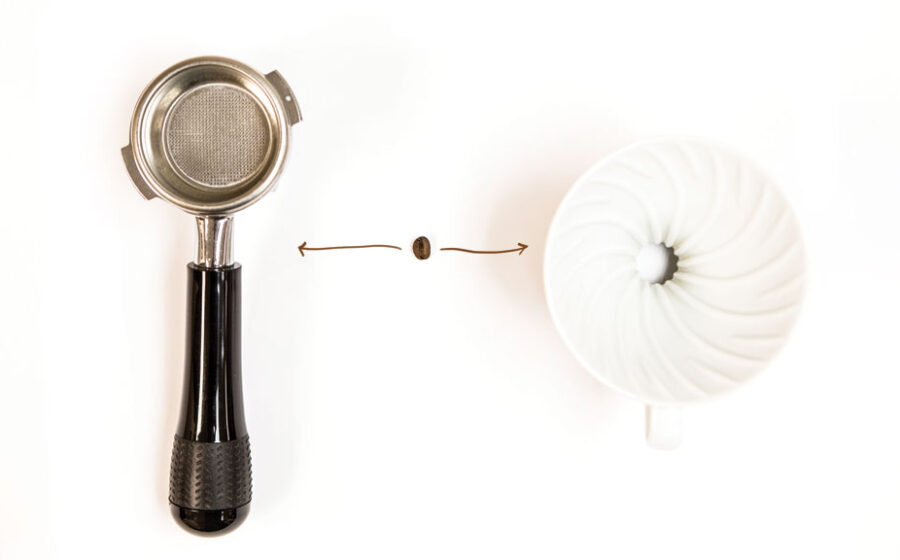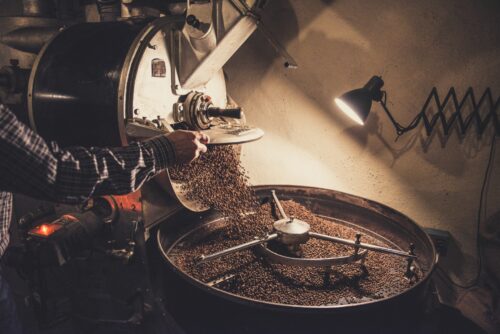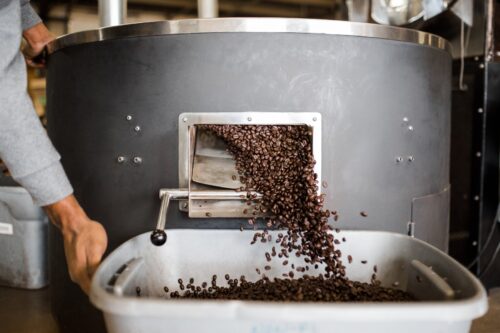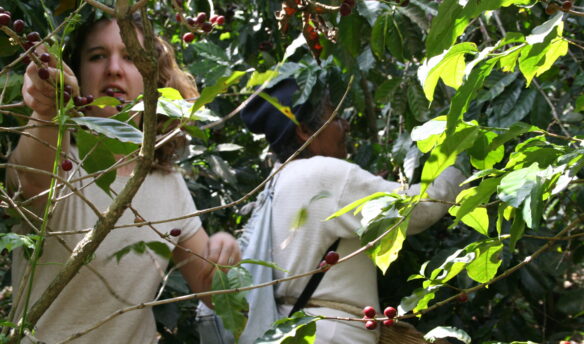Rebel Deeds leans in to take one last whiff from the trier of Sunergos Coffee’s seventy-kilo Petroncini coffee roaster. Returning the trier to its place, Deeds keeps an eye on the slowly rising thermometer.
Beside him, a laptop records the roast profile in real-time. As the tumbling drum emits a hearing loss–inducing squeal, Deeds hesitates for a moment before throwing back a lever. Immediately, a rush of coffee tumbles into the spinning arms of the cooling tray.
The above account could describe a daily occurrence in countless coffee roasteries worldwide, save for one detail. The 100-plus pounds of coffee swirling in the cooling tray are bound for both batch brew and the espresso hopper. Sunergos Coffee is part of a growing number of omni roasters, or roasters that opt to have one roast profile for all brew methods.
Omni is a prefix derived from the Latin word for “all” and describes a growing number of coffee roasters who pick one roast profile regardless of brew method, like Deeds and the team and Sunergos Coffee. “We don’t have an espresso roast, but we do have an espresso blend,” says Deeds. “We roast every coffee on an individual level. One profile per coffee.”
One Style Fits All?
Conventional wisdom calls for coffees roasted to be espresso to be more developed than filter coffee. The argument goes that the small amount of water and the short brewing time of espresso demands a more soluble coffee to achieve an ideal extraction. The easiest way to make a coffee more soluble? Roast darker.
The omni roaster movement questions this logic.
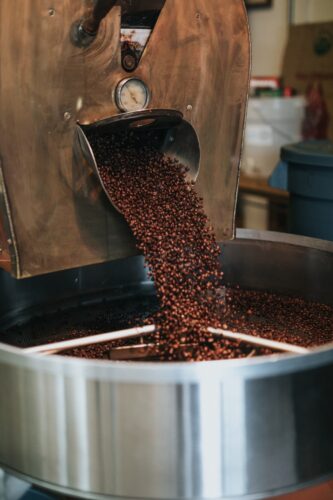
“I guess the question would be, ‘Does a coffee that is roasted darker or longer really taste better in espresso?'” says Deeds. Rather than developing a separate roast profile for espresso, Deeds seeks to find one ideal profile that works for any brew method. “Roasting is the art of drawing what’s already in the coffee to the surface,” says Deeds. “I’m a treasure hunter that’s out to master that particular bean.”
Chelsey Walker-Watson, formerly of Seattle’s Slate Coffee and now with Altlas Coffee, agrees. “We created a unique roast for each coffee we source to highlight the coffee’s inherent, special attributes and to emphasize a balance of acidity and sweetness,” says Walker-Watson.
“Most of our coffee is roasted the same way regardless of brewing to maintain the sweet and bright taste.” Rather than roasting differently for espresso, Slate relied on the barista manipulating other variables—water, temperature, grind size—to achieve the desired extraction.
The omni roaster movement is far from monolithic. While Slate’s espresso tended to be light and bright, Sunergos’ espresso falls within more traditional parameters: strong, sweet, with dominant chocolate notes.
Broadly speaking, omni roasters can be divided into two groups: those who push their espresso extractions and those who pull back on their filter. For the former, this might entail a higher shot volume, and a lower water temperature for the latter.
Simplifying The Process
Many coffee professionals, however, remain skeptical that each coffee has one ideal roast profile.
“Coffee is too complex for us to assume that one roast is going to work with every piece of equipment,” says John Letoto, head roaster at Houston’s Greenway Coffee. “If you’re assuming you can have one roast profile, you’re assuming a lot.” Instead, Letoto sees a spectrum of acceptable roasts.
“Coffee is flexible and dynamic. It can be roasted two different ways or multiple ways,” he says. Although Letoto concedes that some coffees work better with omni roasts than others, he argues the prevailing conventions for roasting espresso exist for a reason.
“An espresso roast is developed for more solubility,” he says, “The more it’s roasted, the more brittle the coffee becomes, which allows water to saturate the cell walls.” Letoto insists it’s not just a matter of roasting darker but how the roaster manipulates the roast profile. “You want solubility of your acids and sugars without solubility of your dry distillates,” he says.
Proponents of omni roasting, however, see other advantages to their approach. In addition to streamlining production, Walker-Watson argues it also reduces waste. “As we rest our coffee for a longer period after roasting to use it for espresso, we can incorporate any coffee not used for brewed coffee as espresso,” she says. This also allows for new, unconventional tasting experiences.
“We have had great success with roasting according to coffee and not the brew method,” she says. “However, many of our coffees present a unique flavor as espresso. For guests seeking traditional, Italian-style espressos, they are often surprised by our offerings.”
So should lovers of sweet, low-acid espresso be threatened by the omni roaster movement? The complexities of espresso extraction and consumer demand ensure a continuing place for the espresso roast profile. But for many micro-roasters who lack the volume to develop separate roast profiles for different brew methods, omni roasting presents what may be the only feasible way to offer a single-origin espresso. Conventions might exist for a reason, but rules are meant to be broken.
This article was originally published on April 14, 2016 and has been updated to meet Fresh Cup’s current editorial standards.
Michael Butterworth is the cofounder of etkincoffee.com and thecoffeecompass.com. He lives in Istanbul, Turkey. Cover photo by Cory Eldridge.



